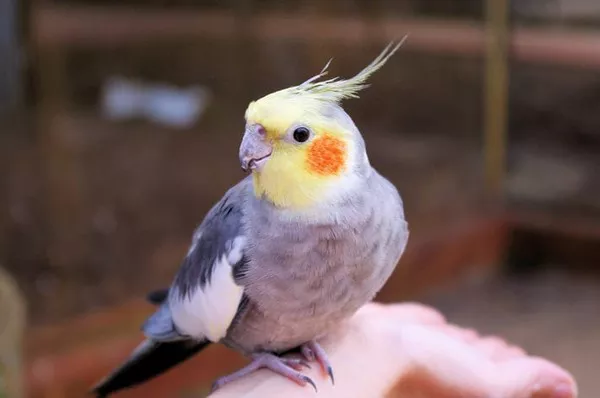Raw food diets, also known as BARF (Biologically Appropriate Raw Food) or PMR (Prey Model Raw), have gained popularity among pet owners seeking to provide their canine companions with a diet closer to what they would consume in the wild. These diets typically consist of raw meat, bones, fruits, and vegetables, and are believed to mimic the natural diet of dogs’ ancestors, wolves. Proponents of raw feeding argue that such diets can improve overall health, enhance coat condition, and promote better digestion in dogs.
Labradoodle Dietary Needs
Labradoodles, a crossbreed between Labrador Retrievers and Poodles, are known for their friendly demeanor, intelligence, and playful nature. Like all dogs, Labradoodles have specific nutritional requirements that must be met to ensure optimal health and well-being. These requirements include a balanced ratio of protein, fats, carbohydrates, vitamins, and minerals. Labradoodles are generally active dogs, requiring adequate protein for muscle development and maintenance, as well as essential fatty acids for healthy skin and coat.
Benefits of Raw Food
Advocates of raw feeding tout several potential benefits for Labradoodles and other dogs. One of the primary advantages is improved digestion. Raw diets typically contain fewer fillers and additives commonly found in commercial kibble, making them easier for dogs to digest. Additionally, raw diets may promote healthier coat condition, with many pet owners reporting shinier coats and reduced shedding in their dogs after transitioning to a raw diet. Other potential benefits include better dental health, increased energy levels, and a reduced risk of certain health conditions such as obesity and allergies.
Risks and Considerations
Despite the potential benefits, raw food diets also come with inherent risks that pet owners should carefully consider. One of the primary concerns is the risk of bacterial contamination. Raw meat, particularly poultry and ground meat, can harbor harmful bacteria such as Salmonella and E. coli, which may pose health risks to both dogs and their owners. Additionally, raw diets may lack essential nutrients if not properly balanced, leading to nutritional deficiencies over time. Furthermore, bones included in raw diets can present a choking hazard or cause dental fractures if not fed appropriately.
Transitioning to Raw Food
Transitioning a Labradoodle from their current diet to a raw food diet should be done gradually to minimize digestive upset. Start by introducing small amounts of raw food alongside their regular meals, gradually increasing the proportion of raw food over several days or weeks. Monitor your dog closely for any signs of gastrointestinal distress, such as vomiting or diarrhea, and adjust the transition process accordingly. It’s essential to consult with a veterinarian before making any dietary changes to ensure the transition is safe and appropriate for your Labradoodle.
Raw Diet Varieties
There are several types of raw diets available for Labradoodles, ranging from commercial options to homemade recipes. Commercial raw diets often come in pre-packaged frozen or freeze-dried formats, providing convenient options for pet owners. These diets are typically formulated to meet the nutritional needs of dogs and may include a variety of protein sources, such as beef, chicken, and fish. Alternatively, some pet owners prefer to prepare homemade raw diets, allowing for greater control over ingredients and sourcing. Homemade raw diets may include a combination of raw meat, bones, organs, fruits, and vegetables, tailored to meet the specific needs of individual dogs.
Supplementation
Whether additional supplementation is necessary when feeding a Labradoodle a raw diet depends on various factors, including the specific diet being fed and the dog’s individual nutritional requirements. In general, well-formulated raw diets should provide all the essential nutrients dogs need for optimal health. However, some pet owners may choose to supplement their dog’s diet with additional vitamins or minerals to ensure complete nutrition. It’s essential to consult with a veterinarian before adding any supplements to your dog’s diet to avoid potential overdosing or nutrient imbalances.
Conclusion
Before transitioning your Labradoodle to a raw food diet or making any significant dietary changes, it’s crucial to consult with a veterinarian. A veterinarian can provide personalized guidance based on your dog’s age, health status, and nutritional needs. They can also offer recommendations on the best type of raw diet for your Labradoodle and help address any concerns or questions you may have. Regular veterinary check-ups are essential to monitor your dog’s health and ensure they are thriving on their new diet.
In conclusion, while raw food diets may offer potential benefits for Labradoodles, they also come with inherent risks and considerations that pet owners must carefully weigh. By understanding the specific nutritional needs of Labradoodles, as well as the potential benefits and risks of raw feeding, pet owners can make informed decisions about their dog’s diet. Consulting with a veterinarian is essential to ensure the transition to a raw food diet is safe and appropriate for your Labradoodle’s individual needs.
Related Topics:
























